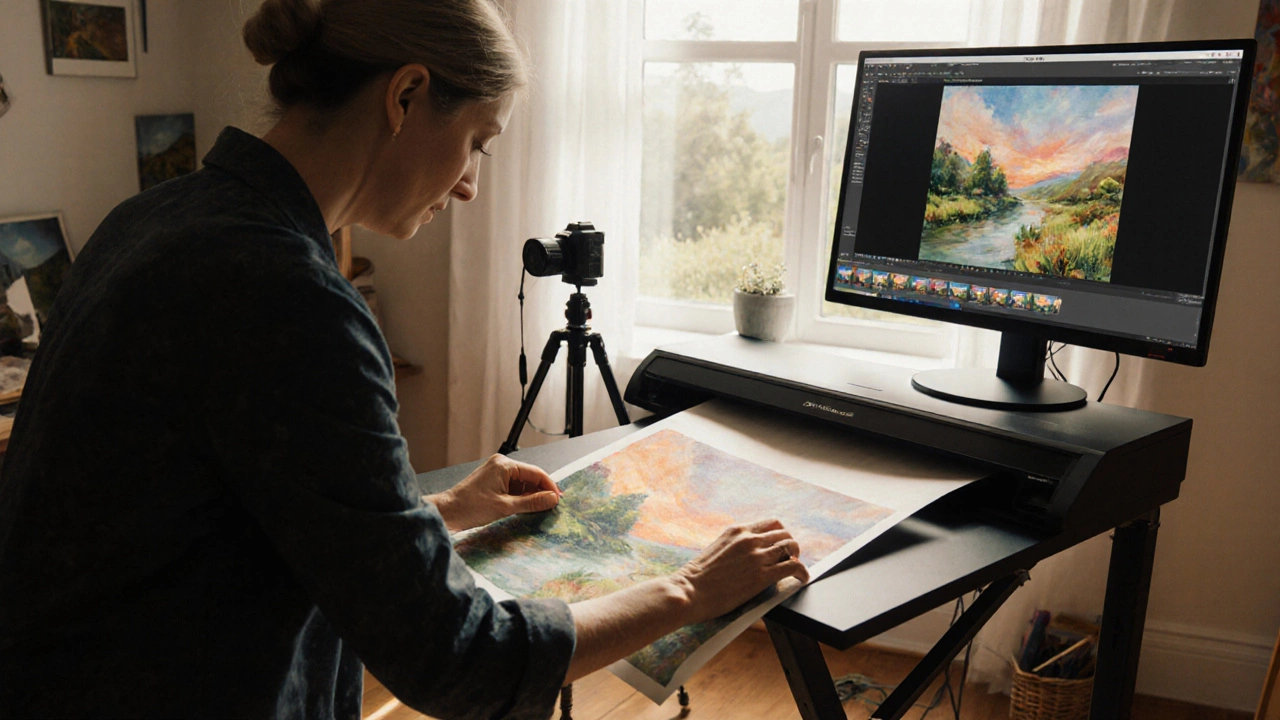Fine Art Printing: What It Is, How It Works, and Why It Matters for Artists
When you hear fine art printing, a high-quality printing process used to produce limited edition artworks on premium materials with long-lasting pigments. Also known as giclée printing, it's the standard way serious artists turn digital files into collectible prints that hold value over time. This isn’t your local photo lab output. Fine art printing uses pigment-based inks, not dye, so colors don’t fade quickly. It’s printed on thick, cotton-based papers or canvas that museums and collectors actually want to hang on their walls.
What makes it different from regular prints? Three things: the ink, the paper, and the printer. giclée printing, a term used for high-resolution inkjet prints made with archival inks on fine art substrates is the most common method. These printers use 12 or more ink colors to match the original artwork’s tone and depth—something a standard printer can’t do. The paper matters too. archival paper, acid-free, lignin-free paper designed to resist yellowing and deterioration for over 100 years is the gold standard. If you’re selling prints, using anything less hurts your credibility. Buyers know the difference, and they pay more for the real thing.
Artists use fine art printing to control quality, protect their work, and make consistent income. You don’t need a gallery to sell prints—you just need the right setup. Many artists start with 8x10 or 16x20 prints on cotton rag paper because those sizes sell best. Some offer signed and numbered editions to create scarcity. Others print on canvas for a gallery look without the frame. The key is matching the print quality to the original artwork’s intent. A watercolor shouldn’t look like a photo print. A digital painting shouldn’t lose its texture. That’s where fine art printing bridges the gap between screen and wall.
It’s not just about selling. It’s about legacy. A well-printed piece can outlive the original digital file. It can be passed down, appraised, and shown in homes decades later. That’s why top artists invest in professional printers, calibrated monitors, and certified labs. They know that a bad print doesn’t just look cheap—it makes the whole body of work seem careless.
Below, you’ll find real examples of how artists use fine art printing to grow their income, define their brand, and connect with buyers. Whether you’re just starting out or looking to upgrade your print game, the posts here cover what actually works—no fluff, no guesswork.
